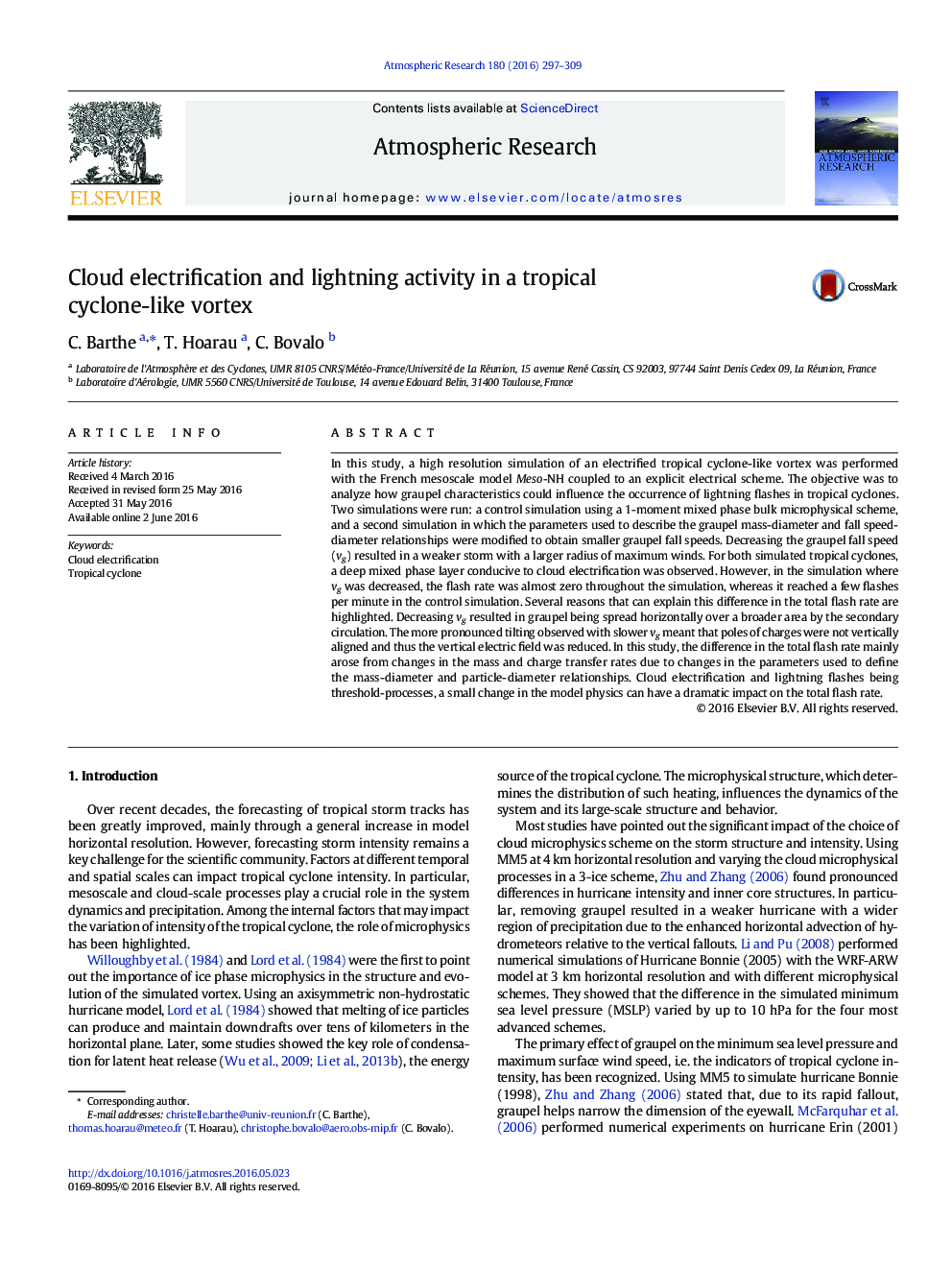| کد مقاله | کد نشریه | سال انتشار | مقاله انگلیسی | نسخه تمام متن |
|---|---|---|---|---|
| 6342927 | 1620501 | 2016 | 13 صفحه PDF | دانلود رایگان |
- A numerical simulation of an electrified tropical cyclone-like vortex is performed.
- Decreasing the graupel fall speed results in a weaker storm.
- A slower graupel fall speed reduces the lightning activity.
- It also results in reduced mass and charge transfer rates and in a higher tilting.
In this study, a high resolution simulation of an electrified tropical cyclone-like vortex was performed with the French mesoscale model Meso-NH coupled to an explicit electrical scheme. The objective was to analyze how graupel characteristics could influence the occurrence of lightning flashes in tropical cyclones. Two simulations were run: a control simulation using a 1-moment mixed phase bulk microphysical scheme, and a second simulation in which the parameters used to describe the graupel mass-diameter and fall speed-diameter relationships were modified to obtain smaller graupel fall speeds. Decreasing the graupel fall speed (vg) resulted in a weaker storm with a larger radius of maximum winds. For both simulated tropical cyclones, a deep mixed phase layer conducive to cloud electrification was observed. However, in the simulation where vg was decreased, the flash rate was almost zero throughout the simulation, whereas it reached a few flashes per minute in the control simulation. Several reasons that can explain this difference in the total flash rate are highlighted. Decreasing vg resulted in graupel being spread horizontally over a broader area by the secondary circulation. The more pronounced tilting observed with slower vg meant that poles of charges were not vertically aligned and thus the vertical electric field was reduced. In this study, the difference in the total flash rate mainly arose from changes in the mass and charge transfer rates due to changes in the parameters used to define the mass-diameter and particle-diameter relationships. Cloud electrification and lightning flashes being threshold-processes, a small change in the model physics can have a dramatic impact on the total flash rate.
Journal: Atmospheric Research - Volume 180, 1 November 2016, Pages 297-309
